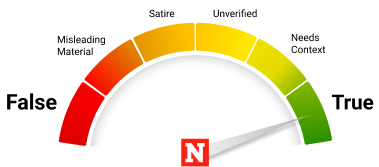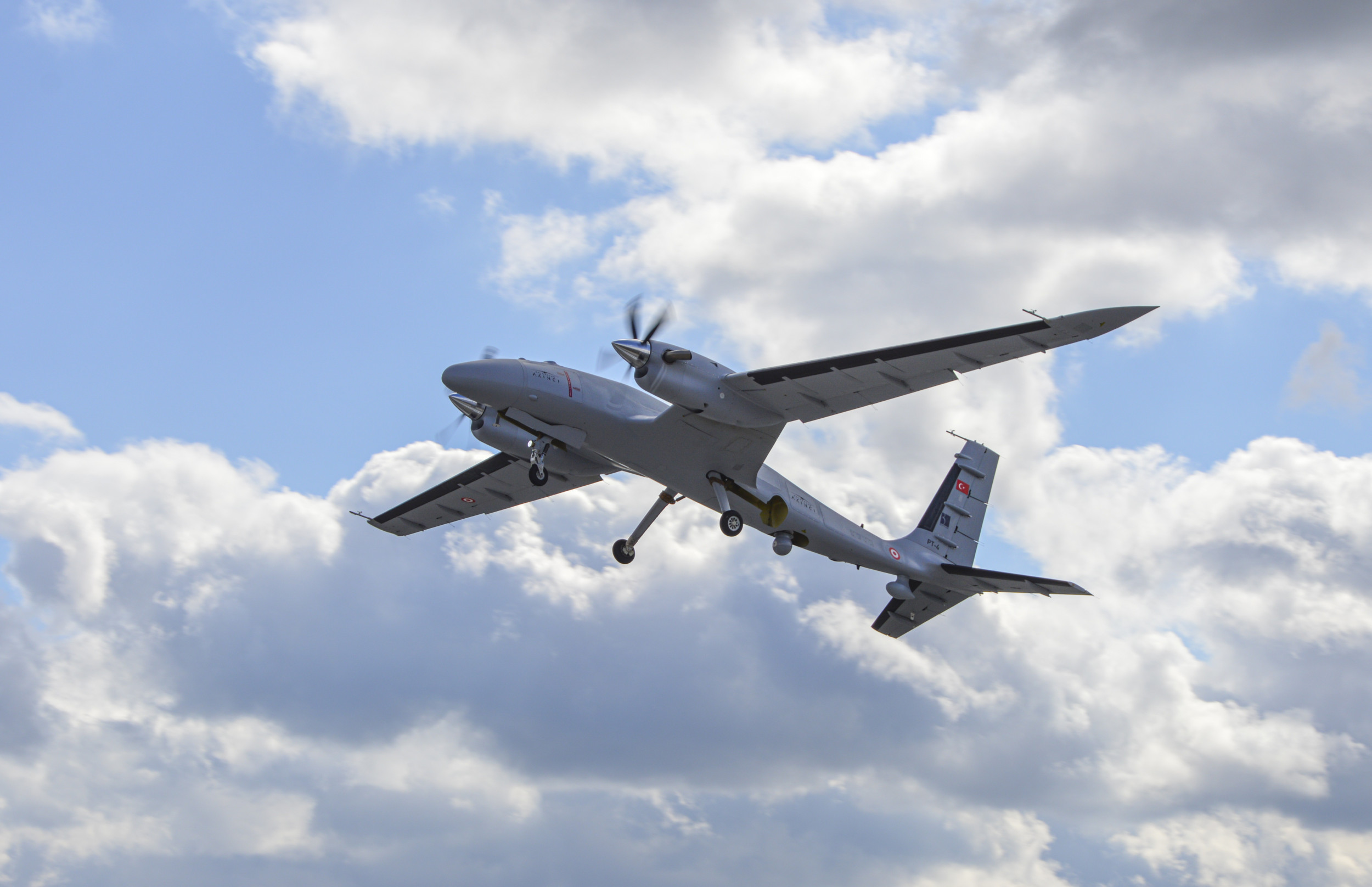Fact Check: Did drone doodle Turkish flag over Raisi helicopter crash site?
The search for the body of Iranian President Ebrahim Raisi, killed in a helicopter crash in northern Iran on Sunday, was assisted by a Turkish drone that detected heat signatures from the crash site. It appeared to have followed a flight path in the shape of the crescent moon and star that features on the Turkish flag.
Teams looking for the Raisi were impeded by thick fog, which has been speculated to be at least one of the possible causes of the crash that killed the Iranian president and several other government officials. Footage from the drone that found the site was livestreamed by Turkish news, attracting millions of views.
After the site was found, the drone headed home and appeared to have left a sign behind marking its presence.
The helicopter transporting Raisi, Iranian Foreign Minister Hossein Amir-Abdollahian, Tabriz Friday prayers leader Ayatollah Mohammad Ali Ale-Hashem, East Azerbaijan Governor General Malek Rahmati and an unspecified number of guards went down Sunday in Iran’s East Azerbaijan province following a trip to the neighboring country of Azerbaijan.

Baykar Press Office/dia images via Getty Images
The Claim
A post on X, formerly Twitter, by open-source intelligence research account @IntelCrab, posted on May 20, 2024, viewed 976,000 times, said: “What does a Turkish drone operator do after finding the burnt corpse of the Iranian president? Doodle a star-and-crescent in your flight path. Duh”
The post showed what appeared to be the flight path of a drone flying from near Van, Turkey, to the border ranges where the helicopter crash site was found. The flight path included a pattern that looked like the star and crescent from the Turkish flag.
The Facts
While it might not seem like the most appropriate occasion for a moment of aeronautical act of patriotism, flight data from the drone that detected crash site heat signatures does show it, at the very least, moving in a star-shaped pattern as it returned to Van, in east Turkey.
As was widely reported on Monday, the call sign of the drone that flew over the northern mountains of Iran where the crash site was found was AKINCI01.
This refers to the name of the unmanned aerial vehicle (UAV) Akinci, produced by Baykar Defense, a private Turkish defense company whose aircraft is used by the Turkish Armed Forces.
The make if the drone was confirmed by the Turkish Ministry of National Defense, which posted on its X account on Sunday, translated as “Based on the request made by the Iranian authorities through our Ministry of Foreign Affairs, an Akinci UAV and a night vision Cougar-type helicopter were assigned to participate in the search and rescue activities of the crashed helicopter of the president of Iran and his delegation.”
The screengrab used by @IntelCrab was captured by tracking site RadarBox, based in Florida, which recorded the flight path between 8 p.m. and 4.20 a.m. local time.
Other flight-tracking services recorded a similar pattern, although not the full crescent moon, only detecting the top curve of the moon and the star.
Newsweek spoke to RadarBox, who said the discrepancy could depend on “local stations to the aircraft’s flight path.”
“We don’t all use one source of data.”
The flight path pattern, as recorded by RadarBox, was also reported by Anadolu Agency, a state-run Turkish news outlet that livestreamed the drone’s path as it flew from Turkey to Iran.
Given the independence of the flight-tracking data, which mimics or is similar to the image shared by IntelCrab, it seems that at the very least we can say that the drone operator attempted to draw the moon and crescent pattern, even if some of the services that track this data did not capture the full pattern on its systems.
Newsweek has contacted the Turkish Prime Minister’s Office via email for comment.
The Ruling

True.
The flight pattern of the drone, named by multiple news agencies as the search for Raisi began, was tracked by one U.S.-based flight-tracking service that showed the UAV fly from Van, Turkey, to northern Iran and sketch the crescent moon and star pattern of the Turkish flag on its way back.
Other flight-tracking services also captured part of the same pattern.
FACT CHECK BY Newsweek’s Fact Check team
Uncommon Knowledge
Newsweek is committed to challenging conventional wisdom and finding connections in the search for common ground.
Newsweek is committed to challenging conventional wisdom and finding connections in the search for common ground.



